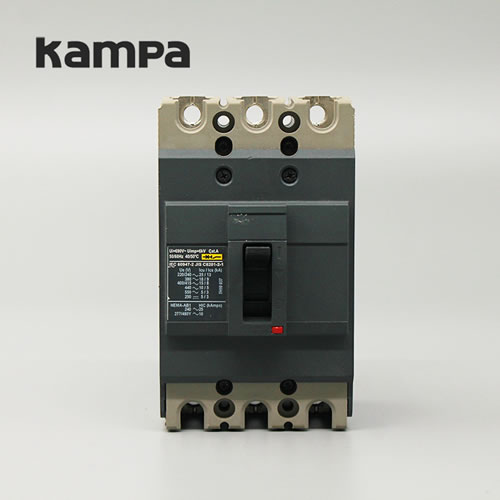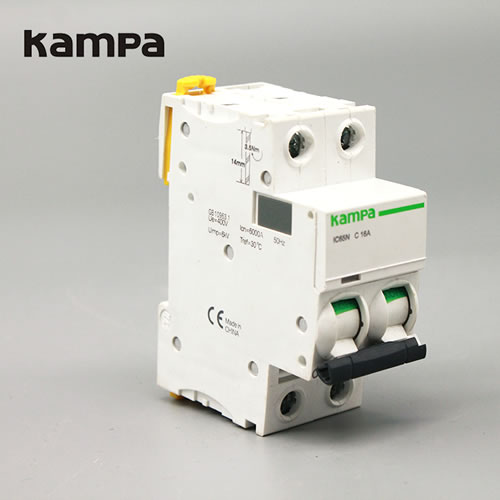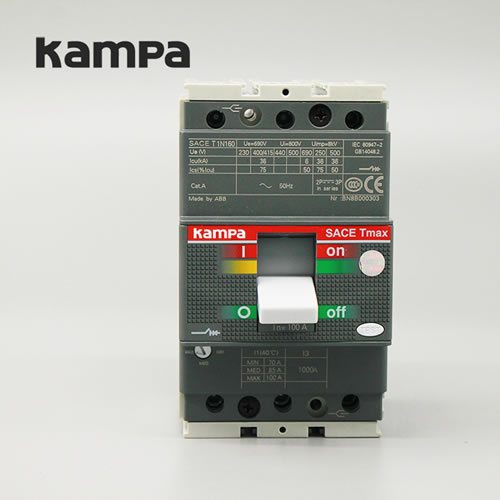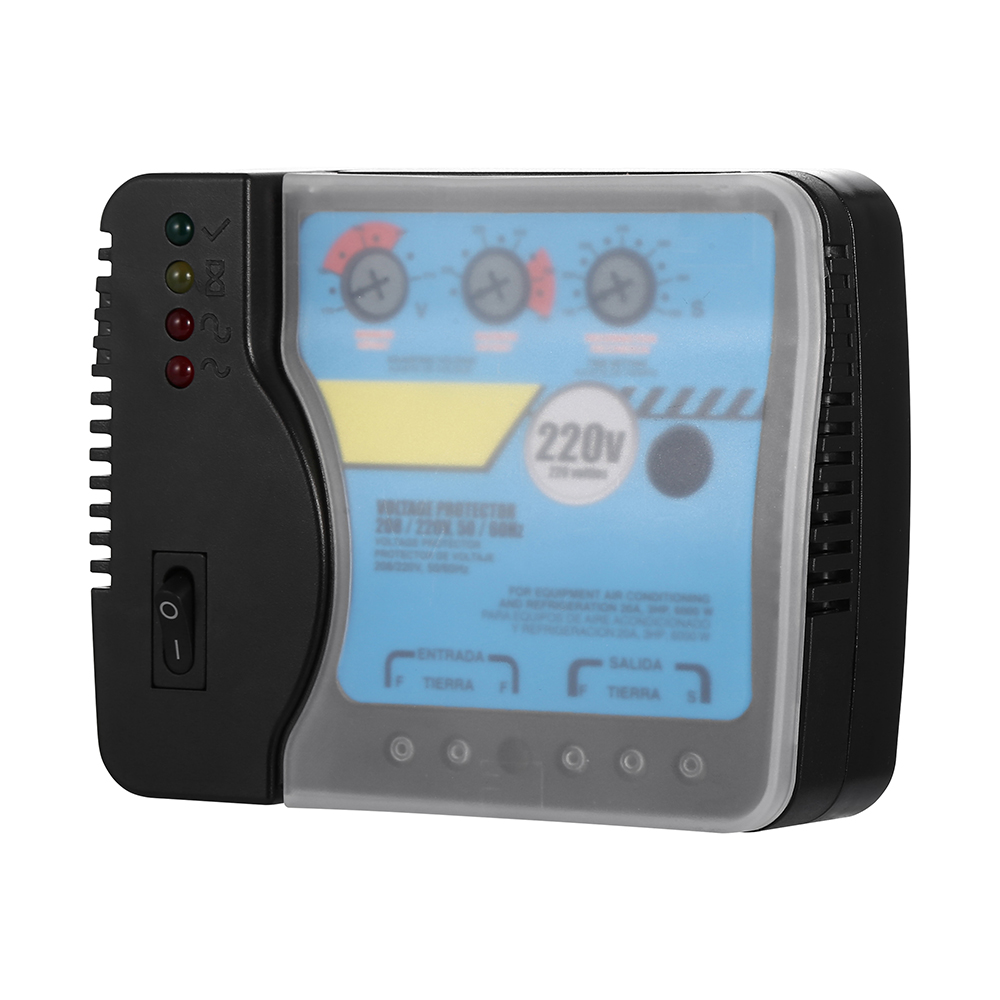Knowledge collection of low-voltage circuit breakers
Datetime: 1/6/2023 3:49:00 PM Visit: 650
Low Voltage Circuit Breaker Catalog
What is a low-voltage power circuit breaker? What is a low-voltage circuit breaker?
How to replace a low-voltage circuit breaker? The installation method and precautions for a low-voltage circuit breaker?
Advantages of low voltage circuit breakers
Daily maintenance method of low voltage circuit breaker
How to use and maintain low-voltage circuit breakers?
Detection and maintenance methods of low-voltage circuit breakers
Expand knowledge
Why use a circuit breaker for low voltage generator
Can a broken circuit breaker cause low voltage?
Can low voltage trip a circuit breaker?
Can a weak circuit breaker cause low voltage?
What is a low-voltage power circuit breaker? What is a low-voltage circuit breaker?
The low-voltage circuit breaker is what we often call the air switch. Its function is to automatically close the switch in case of a short circuit or low-voltage leakage, which can effectively prevent electric shock accidents or fire hazards.
How to replace a low-voltage circuit breaker?
There are many types of low-voltage circuit breakers on the market with different functions. If the low-voltage circuit breaker is not installed according to the instructions, it is very likely to cause circuit instability and burn out the wires, resulting in potential safety hazards. Therefore, it is important to understand the installation method and precautions of low-voltage circuit breakers. very necessary.
1. The internal dust of the low-voltage circuit breaker should be removed before installation, and some lubricating oil should be added to each transmission part; the anti-rust grease on the electromagnet working surface of the release should be wiped clean, so as not to affect the action value of the electromagnetic mechanism.
2. The low-pressure powder road device should be installed vertically. Before installation, check whether the technical parameters marked on the nameplate meet the requirements for use.
3. When the circuit breaker and fuse are installed together, the fuse should be installed before the circuit breaker to ensure safe use.
4. Arcing distance: In order to prevent arcing, the arcing distance of the circuit breaker should be considered during installation, and it should be noted that the bus bar should not be crossed at a place close to the arcing distance above the arc extinguishing chamber.
5. The power supply should be connected to the incoming terminal of the static contact of the low-voltage circuit breaker, and one end of the release should be connected to the load. In order to ensure the protection characteristics of the overcurrent release, the cross-section of the connecting wire should be selected according to the rated current of the release.
6. Low-voltage circuit breakers wired in front of the board are allowed to be installed on metal brackets or metal bottom plates, but low-voltage circuit breakers wired behind the board must be installed on insulation. The bracket or bottom plate that fixes the low-voltage circuit breaker must be flat to prevent the insulating base from being damaged due to force when the screws are tightened. In order to prevent accidents caused by arcing, copper busbars of low-voltage circuit breakers should be wrapped with 200mm insulation or interphase arc partitions from the insulation base.
7. When the low-voltage circuit breaker is used as the main switch or the control switch of the motor, an isolating switch, a knife switch or a fuse must be installed on the power inlet side of the circuit breaker as an obvious disconnection point. All products with grounding screws should be reliably grounded.
8. The thermal release and electromagnetic release of the low-voltage circuit breaker have been calibrated and sealed with red paint before leaving the factory. They must not be adjusted by themselves during installation, so as not to affect the operating characteristics of the release. If the working current of the place of use does not match the rated working current of the release, replace it with a low-voltage circuit breaker suitable for the rated working current of the release.
9. The four-pole leakage circuit breaker must be connected to the lead to make the electronic circuit work normally.
10. The load wiring of the leakage circuit breaker must pass through the load end of the circuit breaker, and any phase line or lead of the load is not allowed to pass through the leakage circuit breaker, otherwise it will cause artificial "leakage" and cause the circuit breaker to fail to close, resulting in " Misoperation".
11. After the circuit is connected, check whether the wiring is correct. Can be checked with the test button. If the circuit breaker can be broken correctly, it means that the leakage protector is installed correctly, otherwise check the circuit or circuit breaker to eliminate the fault. After the leakage protector is put into operation, the user should check whether the circuit breaker is operating normally through the test button every time a period of time passes.
Advantages of low voltage circuit breakers
1. After the fault is disconnected, it can be manually reset without replacing the device unless maintenance is required after cutting off the large short-circuit current;
2. The long-delay release with inverse time-limit characteristics and the instantaneous over-current release has two protection functions, which are used for overload and short-circuit protection respectively, and each performs its duties;
3. Remote control can be realized when there is an electric operating mechanism.
Daily maintenance method of low voltage circuit breaker
1. Inspection before power on
Check the packing box for transporting the circuit breaker. There should be no scraps of paper or dust attached to the circuit breaker; check the connection status of the wires; check the withstand voltage performance and other basic conditions to ensure that there is no problem.
2. Regular inspection
According to the environment and working conditions of the low-voltage circuit breaker, it is necessary to carry out periodic inspections, pays attention to dust, and clean the work.
3. Matters needing attention during internal inspection of low-voltage circuit breakers
When it is necessary to open the cover to check the mechanism and contact system of the circuit breaker, since the insulating partitions and arc extinguishing chambers inside the circuit breaker are easy to fall off, after opening the cover for inspection, it is necessary to carefully count and remove the parts that are easy to fall Restore one by one, for circuit breakers with small frame level current, such as common DZ47-63, DZ47-100 leakage circuit breakers, etc. There is a seal (or warning sign) between the bottom and the cover to prevent random adjustment of the tripping element, so the customer should pay special attention not to touch the tripping element, otherwise, the performance will change, and the manufacturer will be irresponsible.
4. the inspection items and treatment methods of the circuit breaker after the short circuit
When the circuit breaker is in a general short circuit, its breaking current is usually the expected short-circuit current value of the small trunk line (that is, less than the limit short-circuit breaking current of the circuit breaker). This is due to the distance between the short-circuit point and the power supply, the line impedance of the short-circuit point, and the fact that there is a certain margin between the rated voltage of the circuit breaker and the actual line voltage.
For the short-circuit current that is less than the rated operating short-circuit breaking capacity of the circuit breaker (such as circuit breaker DZ47LE), it can be used as it is after breaking. However, if the breaking is the rated limit short-circuit current or the breaking of harsh conditions such as series (backup) protection, the damage to the circuit breaker will be mostly. In the actual operation of running short-circuit current breaking, when the to short-circuit current is broken and the short-circuit accident is eliminated, the circuit breaker needs to be closed again (even if the rated short-circuit current is broken), but after breaking the short-circuit current of the same value again, the circuit breaker It must be replaced.
How to use and maintain low-voltage circuit breakers?
1. Before putting it into use, clean the dust on the circuit breaker, wipe off the anti-rust grease on the working surface of each electromagnet (such as the suction surface of the magnetic system of the pressure loss release), and check whether the fastening bolts are tightened.
2. The setting current, an air gap of the iron core, the distance between moving parts, and adjusting bolts of each release in the circuit breaker are usually adjusted before leaving the factory, and should not be changed arbitrarily during use, so as not to affect the action of the release characteristics to cause malfunctions or accidents.
3. If the circuit breaker has a bimetal strip release, and the temperature in the workplace is higher than its setting value, it should be used with reduced capacity; if the working current of the release does not match the setting current, it should be checked in a special calibration Adjust it to use on the device.
4. After the circuit breaker with the bimetal release is broken due to overload, it should not be "reset and closed" immediately. Generally, it needs to cool for 1 to 3 minutes. After the bimetal is reset, it can be "reset and closed" ". (5) Every time the operating mechanism is used for a certain period of time (1 to 2 years), lubricating oil should be added to its transmission mechanism (except for small-capacity molded case circuit breakers).
6. Every once in a while (6 months to 1 year, or during regular maintenance) the dust and foreign matter on the circuit breaker should be removed.
7. During regular maintenance, you should close and open the switch several times without electricity to check the reliability of the circuit breaker action. If you find that the transmission mechanism is stuck, you can add an appropriate amount of lubricating oil and operate immediately after refueling. Several times, so that the lubricating oil penetrates into each rotating shaft pin.
8. The condition of the contact surface of the contact should be checked regularly. When dirt and soot are found, they should be wiped off with acetone or other solvents; when burrs are found, they should be cleaned with a fine file; When worn to only 1/3 of the original thickness, they should be replaced.
9. For interrupting short-circuit current or long-term operation of the arc extinguishing chamber, the black soot and metal particles on the inner wall and grid should be removed. If it is a clay interrupter, it should be replaced immediately when it is damaged. The arc extinguishing chamber that has not been used for a long time as an accessory should be dried before being put into use so that it has good insulation performance.
10. The current setting value and time delay of each release should be checked regularly; for semiconductor releases, the test button should be used to check its action regularly.
Detection and maintenance methods of low-voltage circuit breakers
During the operation of low-voltage circuit breakers, failures will occur due to improper use or aging of components in long-term operation, and there are many types of failures. The following is an introduction to several common low-voltage circuit breaker failures and maintenance analyses.
1. The low-voltage circuit breaker cannot be closed
The reason for this kind of failure is that the Undervoltage release has no voltage or the coil is damaged, the reaction spring force is too large, or the mechanism cannot be reset and then buckled. The repair method is to check and replace the power supply voltage, replace the coil or readjust the bomb, for institutions that cannot
In the case of resetting and buckle, adjust the buckle contact surface to the specified value.
2. The temperature rise of the low-voltage circuit breaker is too high
The reason is that the contact pressure is too low. At this time, the head pressure can be adjusted or the spring can be replaced. Sometimes the fault may also be caused by severe contact surface wear or serious poor contact. At this time, a new circuit breaker should be replaced. If the temperature rise is too high, it is because the connecting screws of the two conductive parts are loose and should be tightened again.
3. The circuit breaker cannot be broken normally
When the current has reached the set value and the circuit breaker cannot be broken normally, check whether the bimetal strip of the thermal release is damaged, and replace it if damaged. Then check whether the distance between the armature and the iron core of the electromagnetic release is too large or whether the wire girth is damaged, and then adjust the distance between the armature and the iron core or replace the broken circuit. Sometimes the circuit breaker will be disconnected immediately when the automatic motor is activated. This may be because the instantaneous setting value of the overcurrent release is too small, or the setting value has changed due to vibration during operation. The instantaneous setting value of the overcurrent release can be adjusted to the specified value. If some parts are damaged, the trip unit can be replaced.
4. There is noise in the release
When the voltage-loss release of the low-voltage circuit breaker makes a noise, you can observe whether there are rust spots or oil stains on the surface of the iron core, and wipe them off if any. Or observe whether the short-circuit ring is broken, and if it is broken, replace the armature and iron core. Then you can check whether the reaction spring force is too large, if it is too large, it should be readjusted.
Expand knowledge
Why use a circuit breaker for low voltage generator
The main function of installing generator circuit breakers in power plants is to simplify the operating procedures, reduce the accident range of generators and transformers, simplify synchronous operations, improve their reliability, and facilitate debugging and maintenance.
Can a bad circuit breaker cause low voltage?
No! If the circuit breaker is defective, it will not be able to protect it, and it needs to be replaced as soon as possible! It is easy to burn out the equipment. If the operating voltage of the circuit breaker is too high or too low, it will cause false opening and closing of the circuit breaker, and refuse to open when the circuit breaker fails, causing accidents and even affecting the stability of the entire power grid.
Can low voltage trip a circuit breaker?
Will the low voltage cause the circuit breaker to trip? Low voltage: If it is a motor load, the low voltage will cause the motor speed to be too low. As a result, the motor will cause overcurrent, which will cause the air switch to trip due to overcurrent.
Can a weak circuit breaker cause low voltage?
The low voltage regulations for the opening coil and contactor coil are because the operating voltage of this coil cannot be too low or too high. If it is too low, in the case of poor insulation of the DC system and two points of high-impedance grounding, a small DC voltage may be introduced at both ends of the opening coil or contactor coil. When the operating voltage of the coil is too low, it will cause an open circuit If it is too high, it will refuse to trip because the DC bus voltage drops when the system fails.





